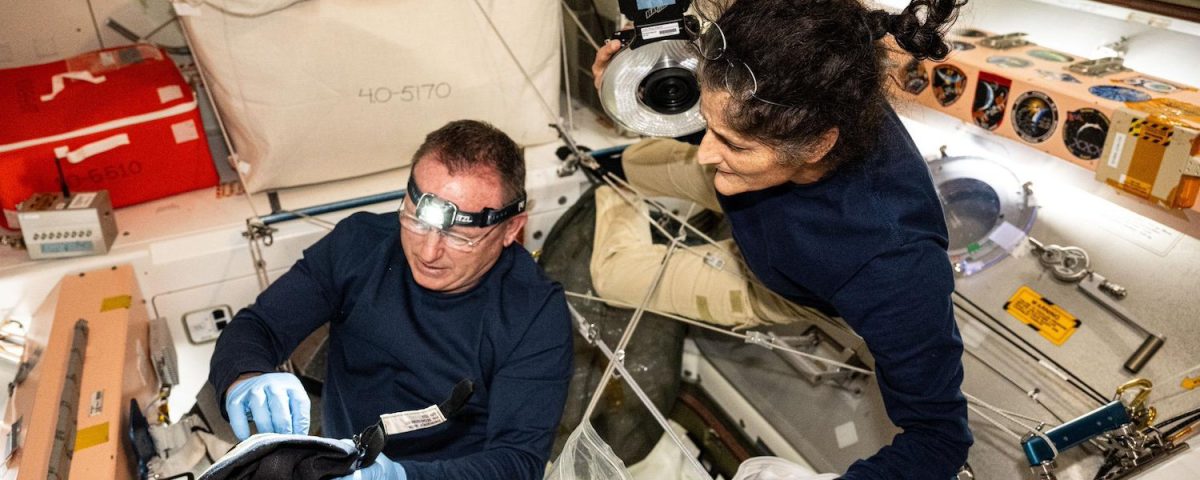Boeing’s Stranded Astronauts Will Have to Stay on the ISS for Even Longer
Boeing’s Stranded Astronauts Will Have to Stay on the ISS for Even Longer
The crew launched to the ISS in June for a week-long mission but will end up spending an unplanned nine months in space.
Full Article
The two NASA astronauts who launched to the International Space Station (ISS) on board Boeing’s Starliner spacecraft will have to wait even longer to return home. NASA delayed the launch of a SpaceX Dragon spacecraft, designated as the Starliner astronauts’ ride home. Originally set for liftoff in February 2025, NASA’s SpaceX Crew-10 will launch no earlier than late March 2025 to “complete processing on a new Dragon spacecraft for the mission,” the space agency wrote in an update. The new Dragon spacecraft will arrive at SpaceX’s processing facility in Florida in early January. âFabrication, assembly, testing, and final integration of a new spacecraft is a painstaking endeavor that requires great attention to detail,â Steve Stich, manager of NASAâs Commercial Crew Program, said in a statement. After launching to the ISS with the Crew-10 astronauts, the Dragon spacecraft will be used to transport the SpaceX Crew-9 mission back to Earth. That includes NASA astronauts Nick Hague, Suni Williams, Butch Wilmore, and Roscosmos cosmonaut Aleksandr Gorbunov. Williams and Wilmore launched to the ISS on June 5 on board Boeing’s Starliner for the first crewed test flight of the spacecraft. Starliner’s journey to the ISS was less than ideal; five of the spacecraftâs thrusters failed and the spacecraft developed five helium leaks, one of which was identified prior to liftoff. The crew capsule remained docked to the ISS for months while NASA and Boeing debated whether or not Starliner is fit to return the astronauts to Earth safely. Mission teams ultimately decided to return an uncrewed Starliner and bring back its crew on board a SpaceX Dragon spacecraft. This marked a severe blow to Boeing’s Starliner program, but it also meant that the two astronauts would have to spend an unexpectedly long time on board the ISS. The Starliner crew was originally meant to be in space for a week or so, but the astronauts were now forced to spend months living and working in the space station. The most recent delay of the Crew-10 launch is yet another month added to Williams and Wilmore’s unplanned time in space. Astronauts normally spend around six months on board the ISS, with some staying in space for a little over a year. Recent media reports have raised concern over Williams’ health due to spending an extended period of time on board the ISS, but the astronaut has dismissed speculation over her weight loss. Starliner’s Crewed Flight Test is part of NASAâs Commercial Crew Program, which is meant to transport crew and cargo to and from the ISS under a $4.3 billion contract with the space agency. NASAâs other commercial partner, SpaceX, has so far launched nine crews to the space station, and is gearing up for its Crew-10 liftoff. NASA had hoped that Starliner would launch its first operational mission by early next year, but the space agency opted to freeze Boeing’s program until it determines a better path to its certification.
BoeingBoeing StarlinerNASASPACEXStarliner
Get the best tech, science, and culture news in your inbox daily.
News from the future, delivered to your present.
Please select your desired newsletters and submit your email to upgrade your inbox.
The spacecraft survived scorching temperatures at a record proximity, and is expected to send details of its close call in the new year.
Parker Solar Probe will break its silence on Fridayâthat is, if it survived its closest approach to the Sun.
Oh yeah, Palmer Luckey’s in the mix too.
The Orion crew capsule is designed to jettison away from the SLS rocket in a launch abort scenario.
At 3.8 million miles from the Sun’s surface, Parker Solar Probe will be the closest a human-made object’s ever been to our host star.
The space agency is looking to maintain human presence in the microgravity environment as it transitions to commercial stations.
The Best Tech Gifts of 2024 â We may earn a commission when you buy through links on our sites.
©2024 GIZMODO USA LLC. All rights reserved. Mode
Follow us
Mode
Follow us



